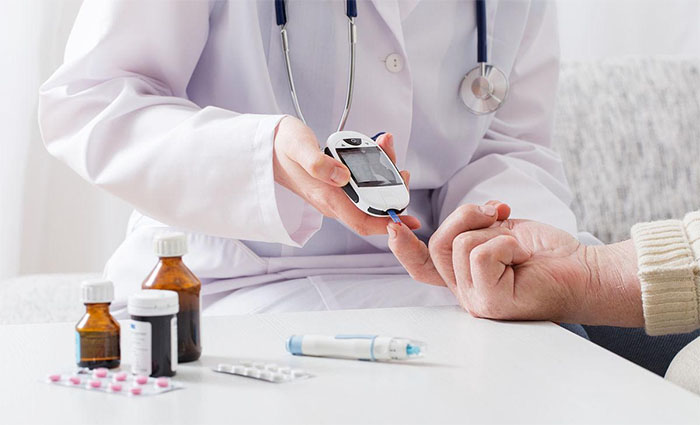- Login
- Cart{{shopingCartNum}}
- English

High blood sugar refers to a glucose level in the blood that exceeds the normal range. In a fasting state, blood sugar levels should ideally remain within the range of 70-100 milligrams per deciliter (mg/dL). The diagnostic criteria for high blood sugar may vary based on age, health conditions, and other factors, but typically involves fasting blood sugar levels exceeding 126 mg/dL.
Polydipsia and polyuria: High blood sugar leads to the kidneys filtering a large amount of glucose, increasing the glucose content in the urine, resulting in excessive thirst and frequent urination.
Fatigue: When cells cannot adequately utilize glucose, the body fails to obtain sufficient energy, leading to feelings of fatigue.
Blurred vision: High blood sugar may cause swelling in the eyes, leading to blurred vision or difficulty focusing.
Persistent hunger: When cells cannot obtain sufficient energy, the body experiences persistent hunger.
Weight loss: The body begins to break down fat and muscle to acquire additional energy, resulting in weight loss.
Insufficient insulin: Insulin is a key hormone in regulating blood sugar. If there is a lack of insulin secretion or if it does not function effectively, blood sugar levels can rise.
Insulin resistance: Reduced cellular response to insulin causes it to be ineffective in promoting glucose uptake, leading to elevated blood sugar levels.
Dietary factors: High sugar and high carbohydrate diets may result in elevated blood sugar, particularly in individuals with insulin resistance.
Lifestyle: Lack of exercise and obesity are risk factors for high blood sugar, as exercise helps improve cellular sensitivity to insulin.

Frequent urination: Frequent urgency and urination may be a sign of uncontrolled blood sugar. High blood sugar leads to the kidneys filtering excessive glucose, increasing glucose content in the urine, leading to frequent urination.
Intense thirst: High blood sugar causes dehydration, resulting in intense thirst. Frequent drinking may be the body's attempt to eliminate excess glucose.
Persistent fatigue: When the body cannot fully utilize glucose, inadequate energy supply can result in persistent fatigue. This is due to cells not receiving the necessary energy, affecting normal metabolic activities.
Blurred vision: High blood sugar may cause eye swelling, resulting in blurred or unclear vision. This is due to the affected transparency of the eyeball, leading to issues with light refraction.
Persistent hunger: Due to inadequate cellular utilization of glucose, the body experiences persistent hunger, despite having eaten. This is because cells are not receiving sufficient energy.
Weight loss: High blood sugar causes the body to break down fat and muscle to acquire extra energy, potentially resulting in weight loss. This is a potential sign of uncontrolled blood sugar.
Skin issues: High blood sugar may lead to increased risk of dry, itchy skin or infections. Because high blood sugar affects the normal function of the immune system, the skin is more susceptible to damage.
Slow wound healing: High blood sugar may affect blood circulation and the immune system, resulting in slow wound healing. This is particularly important for diabetic patients, as they are more prone to chronic wounds and infections.

Low-sugar diet: Avoid high-sugar and high-carbohydrate foods, including sweets, desserts, white rice, white bread, etc. Opt for low-sugar foods such as whole grains, vegetables, and fruits.
Balanced diet: Properly combine proteins, fats, fiber, and carbohydrates to ensure a balanced intake of various nutrients.
Control portion sizes: Regulate food intake to avoid overeating, which helps to prevent blood sugar fluctuations.
Regular monitoring of blood sugar levels is crucial for diabetic patients. This helps in timely adjustments of diet and medication to maintain blood sugar levels within the target range.
Regular physical exercise helps improve cellular sensitivity to insulin, facilitating more effective glucose uptake by cells. Aim for at least 150 minutes of moderate-intensity aerobic exercise per week.
Controlling weight helps reduce insulin resistance, lowering the risk of diabetes and high blood sugar. Maintain a healthy weight through a balanced diet and regular exercise.
Select foods with a low glycemic index (GI), which releases glucose more slowly, avoiding rapid increases in blood sugar. Examples include whole grains, legumes, and some nuts.
Inadequate sleep is associated with poor blood sugar control. Ensure sufficient rest each night to help maintain the body's physiological balance.